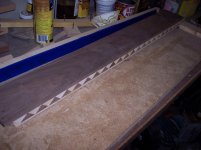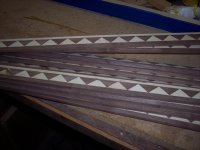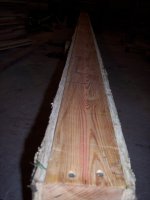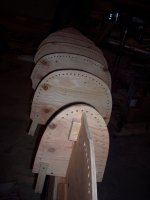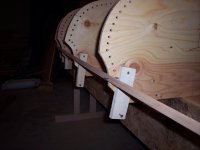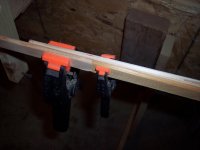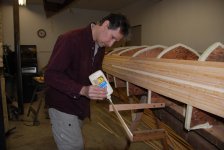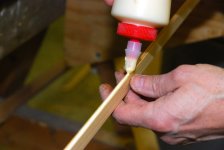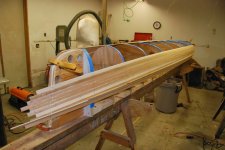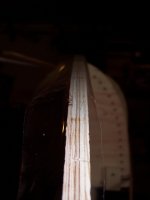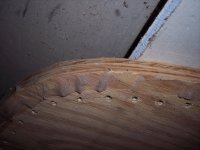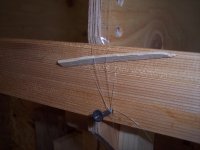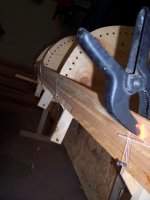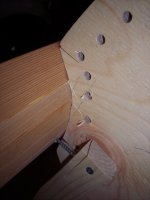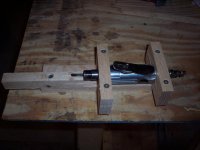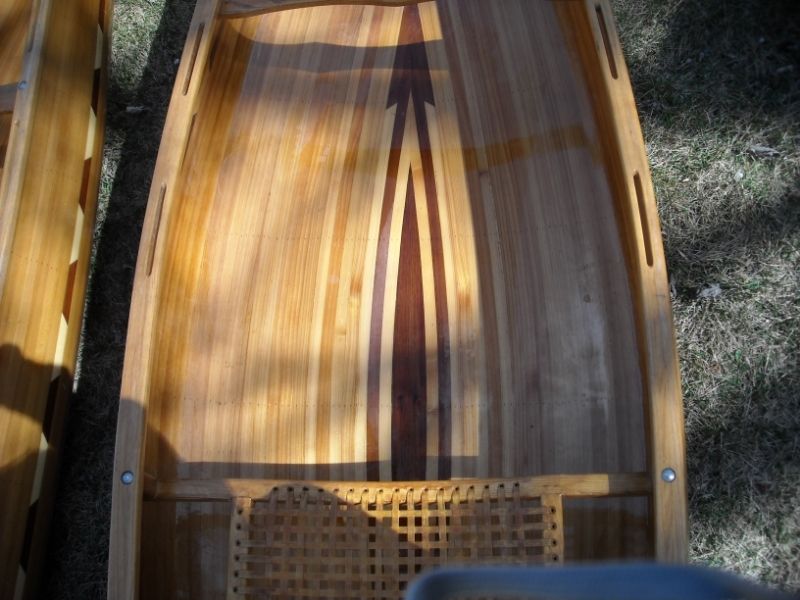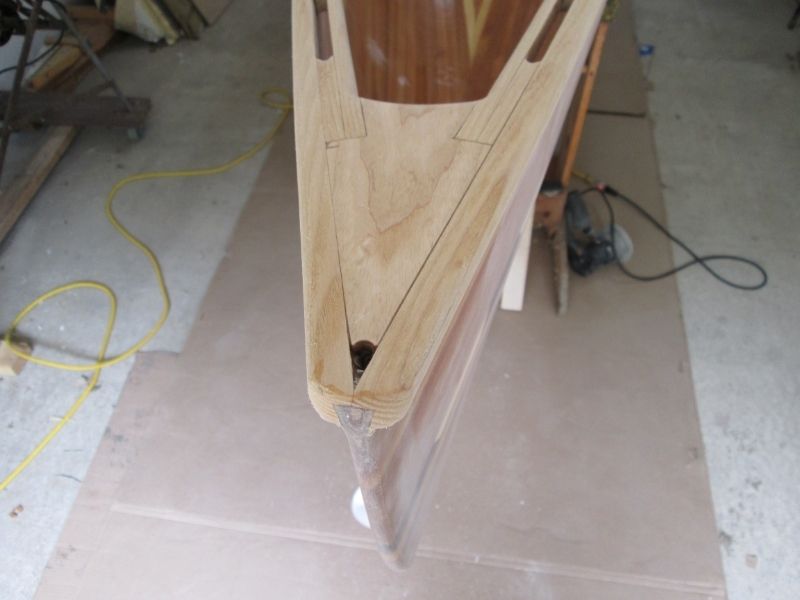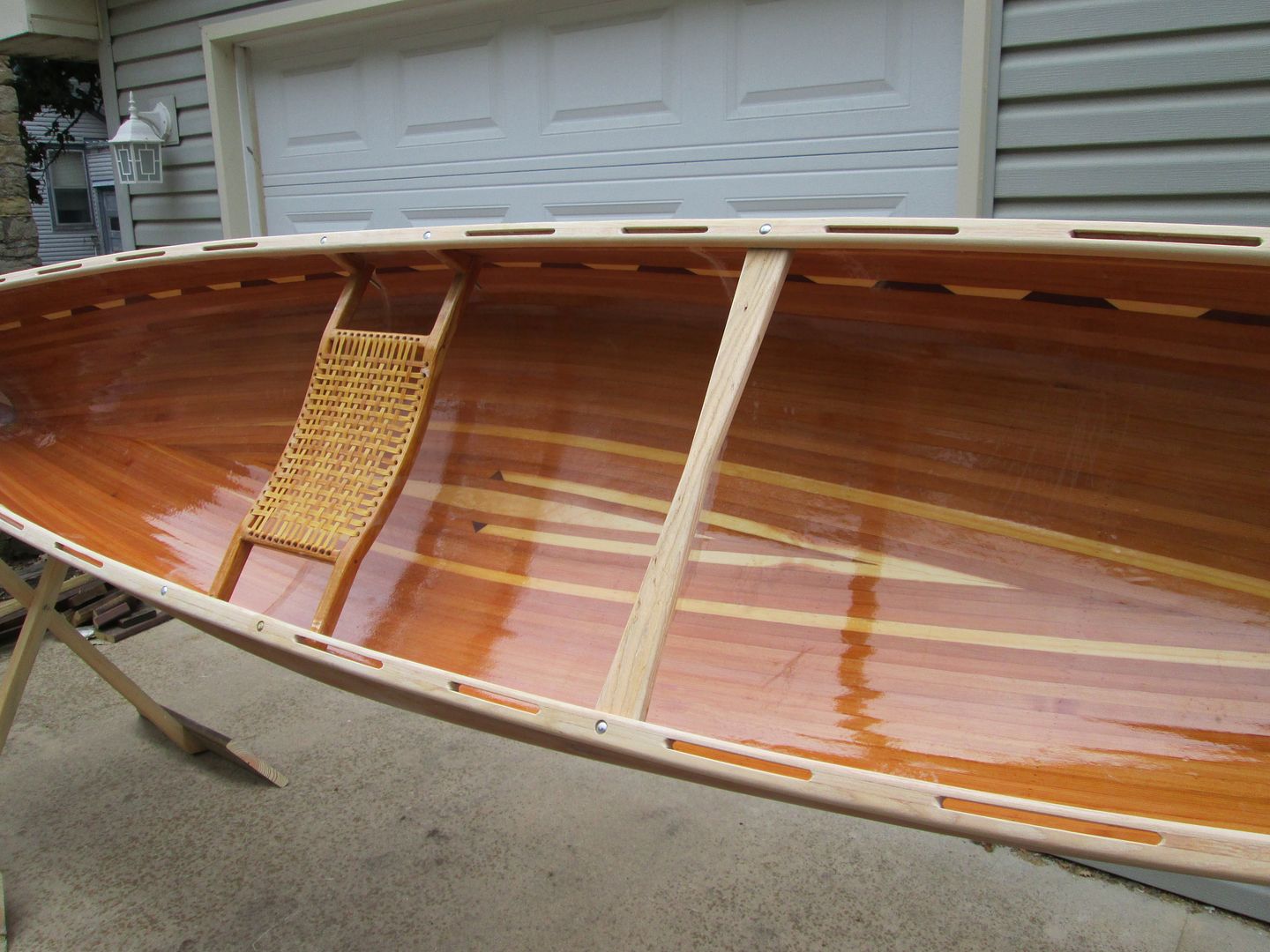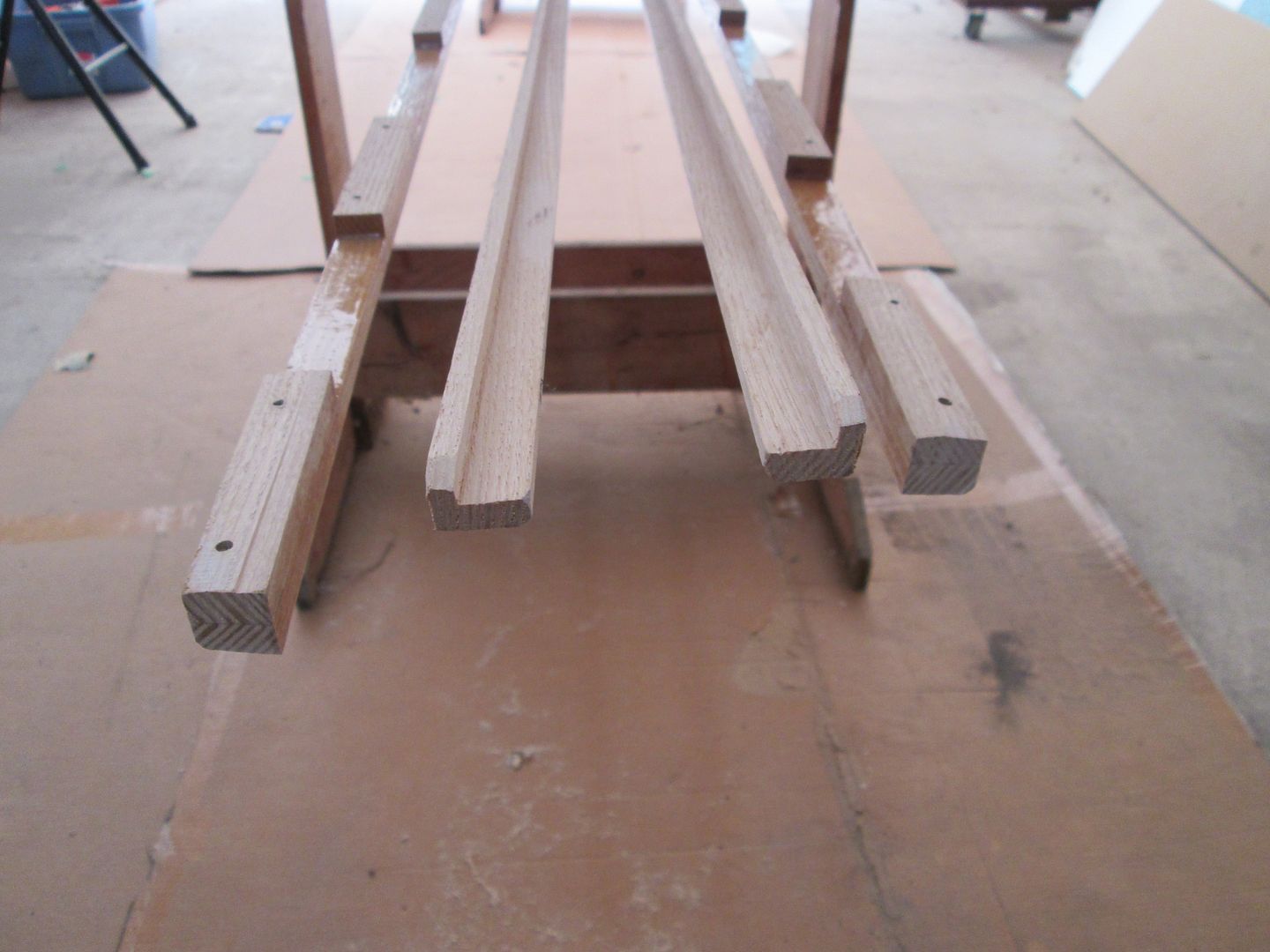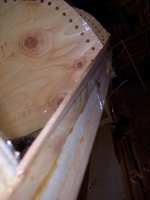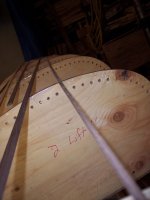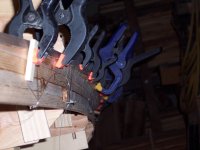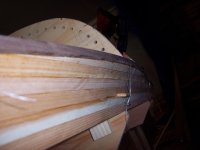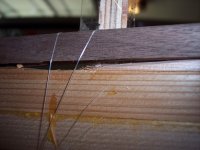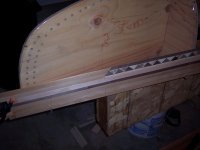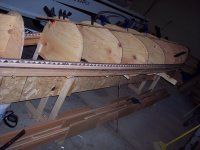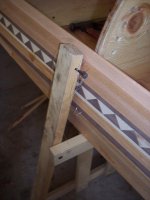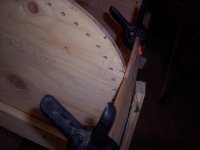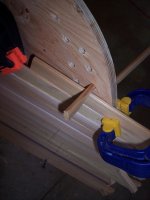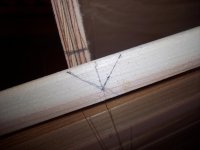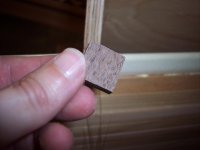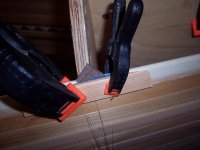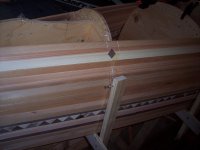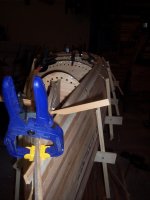No Title
So, I've gotten past the knuckle. A bit of an adventure. If you guys haven't figured this out yet, I always go with something a little different from what others consider "Tried and Proven"
For the most recent example, I did the knuckle a little different from the way
Alan Gage Did with his Solo Expedition (Page 2 on that thread)
That "mystery tool" was
Supposed to be for trimming back the stepped strip edges parallel with the lower hull portion of the form, but that didn't work out. Something was in the way. Now what was it? Oh, yeah. All the fishing line. Oh, well. A handplane works just as well, and makes less dust.
The reason for trimming first is in how I lay the next strip. It's walnut, and that means my hard edge is backed by something harder than cedar. Will end up fairing to match the two curves, and knock the corner off just enough to be able to get the cloth to lie around it.
My Knuckle fades into the hull at the ends, so there is a winding bevel on the short bits of cedar, and a matching one on the walnut, in the space between the #2 and #3 stations. That one will take a bit of practice to get right, but the oops is small enough that I can fill it easily.
One cedar strip, than the accent strip.
That's where the photos end. That was all yesterday
I did get a few more cedar on today, but no photos, and I left my camera at the shop. I know it's time to start moving my attachment points up when I spend more time adding fishing line than I do laying strip. 1/2 hr, per strip,
per side is getting a little crazy! This method is supposed to be fairly quick. I have decided, though, that if I ever do one where I don't mind fastener holes, I won't mess around with staples. 1" finish brads. (hand nail) They grab and grip like nobody's business, and you get precision control of placement, angle, and depth.

